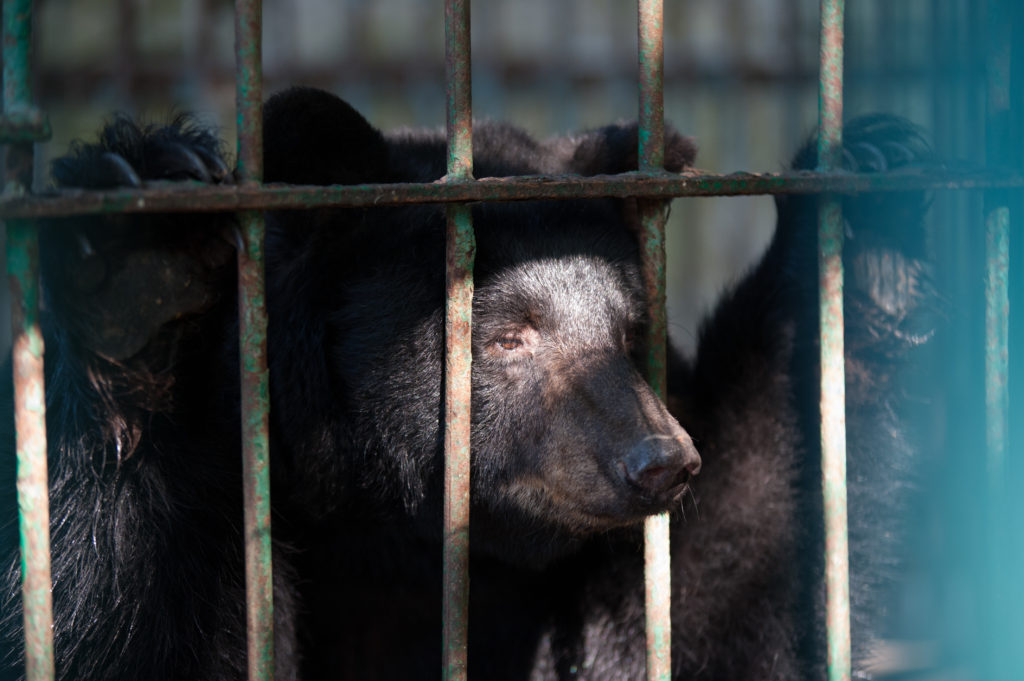
The Crazy Radicals Who Hurt Animals and Make Us Scratch Our Heads
- Wayne Pacelle
For charitable purposes only, I wish I had a dollar for every time I told a lawmaker or anyone else about some peculiar form of animal exploitation and they replied, “I had no idea that kind of thing happens.”
So many forms of animal exploitation are so far out that they seem contrived or fanciful.
Who would think it’s fun or challenging to shoot a drugged lion in a fenced enclosure at a canned hunting facility in South Africa?
Or a trainer injuring the feet of a Tennessee Walking Horse so severely the poor creature throws his front legs high into the air as a reaction to the pain?
Or a shopper buying a pangolin or a bat from a live-animal market and taking the animal home to eat?
Animal abuse can be as surprising as it is crude and diabolical.
The team at Animal Wellness and I have been making the rounds on Capitol Hill lately on two bills – the Bear Protection Act and the Big Cat Public Safety Act.
It doesn’t take a medical degree to realize it’s quackery to think sprinkling an ounce of dried bear gallbladder into water produces a life-saving elixir.
It shouldn’t take more than an ounce of common sense to understand that if your life depends on ingesting that kind of potion, you must be able to find some better treatment options.
Yet there’s organized exploitation of bears to obtain their gallbladders. Some small set of would-be entrepreneurs in China, South Korea, and Vietnam breed and keep bears in pits, extract bile from them and eventually cut out their bladders in what amounts to a barbaric organ-harvesting enterprise. And throughout the world, there are poachers who kill bears in the wild to extract their organs an sell them for thousands of dollars on the black market.
The Bear Protection Act, introduced by Senators John Kennedy, R-La., and Cory Booker, D-N.J., and Reps. Ted Lieu, D-Calif., and Rodney Davis, R-Ill., would ban any interstate trade, imports or exports of bear gallbladders.
I find it hard to believe that anyone could make a straight-faced argument against such morally obvious reform. Yet opponents are stirring, offering up their prattling justifications.
But that bill is rivaled, in terms of basic good sense, by the Big Cat Public Safety Act. This bill would clarify that the trade in big cats for the pet trade is forbidden. Yes, it’s an axiom that no sane person would keep a tiger in the basement or backyard as a pet. But here’s a bill for the .01 percent – for those who just can’t find a way forward without a big cat in their lives.
The bill would also put an end to roadside zoos offering up cub-petting exhibitions. There, at the shoddy zoos, operators breed lions and tigers to produce adorable little cubs. Fetching are the kittens. But frightening are the people who engineer this hucksterism. With cub in hand, they hawk a personal experience offering ticket-buyers the opportunity to cling to and frolic with a furry infant who’s been taken away from his or her mother just weeks after birth.
After a few months, the lions and tigers get too big to handle. Soon they can rake a person with their claws or bite through their neck. Right then and there, even the opportunists running these menageries realize the cub-petting must cease.
But retiring the bigger cubs means the roadside zoos now need some little cubs. More breeding needed. And, sadly, there’s no space for the 250-pound lion, so he must go. Put his picture in the Animal Finder’s Guide and he’s whisked into the exotic animal trade.
Our nation has dozens of big cat sanctuaries because of this pathetic sequencing of events. Not one of these facilities wants to operate and clean up the mess made by human miscreants, but they do so out of a moral duty.
A national policy that doesn’t forbid this reckless breeding has the effect of placing a massive unfunded mandate on the animal welfare community. Think of these animal welfare non-profits as small operations struggling to bail water from their basement, with a pipe that’s broken and deluging them day after day. They can’t get ahead when dozens of pet owners and cub breeders keep funneling cats into the front end of that pipeline.
A tiger may live 20 years. Constructing a proper enclosure may cost hundreds of thousands of dollars. And it costs hundreds of dollars a week to feed the animal. If there are health issues, then veterinarians and tranquilizer guns must be employed to conduct even simple procedures.
The average big cat in a sanctuary may cost a facility $500,000 or even a million dollars, during the animal’s lifetime.
That’s hundreds or thousands of donations made by caring people. Money that could go to solve other problems.
If you think it’s colossally stupid to kill bears for their gallbladders and to raise tigers for petting exhibitions, call your federal lawmakers.
Urge them to cosponsor the Bear Protection Act (HR 2264 and S. 3196) and the Big Cat Public Safety Act (HR 1380 and S. 2561). You can reach your lawmaker by calling 202-224-3121.
If they haven’t heard from one of us at Animal Wellness Action or Big Cat Rescue, then maybe the person on the other end of the phone will say, “I had no idea that kind of thing happens.”
Tell them it does. And that’s why you’re calling.